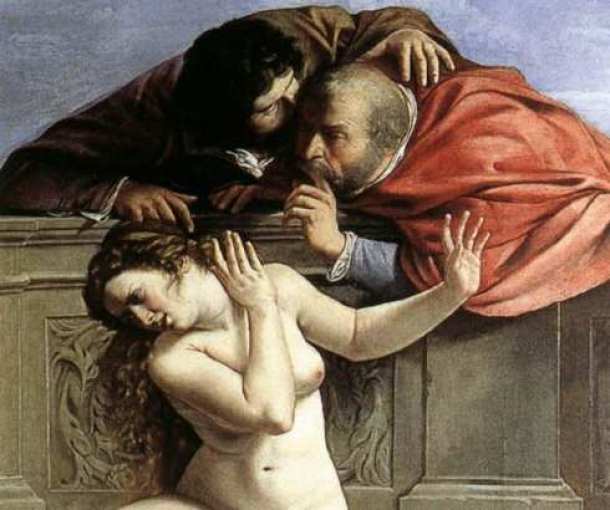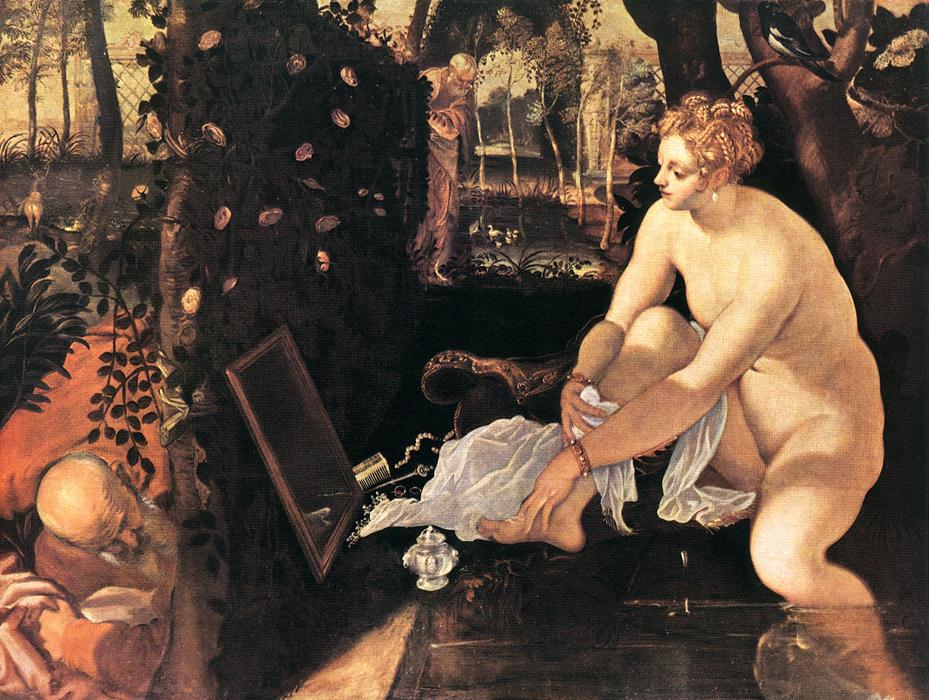Karima Nasr
Professor Cacoilo
Post 2
3-7-17
Women in Europe during the middle ages were expected to obey their husband and aid him in his business. If a woman was not married, she was ought to find a husband soon because “women were usually engaged to be married at age 12, and were married by 15”(Guerrilla Girls 22). In addition to men having the right hand over women, the Catholic Church dominated the era as a whole, “Whether laboring in the service of God or for daily subsistence, the lives of most medieval men and women were organized around work”(Chadwick). Many women became nuns which is a great opportunity for them to upgrade their work life.This is because nuns specifically were allowed to be involved in projects and hold some leadership positions. This segued into women becoming artisans and eventually artists. These roles influenced the lives of women artists in both a negative and positive manner. Negatively, because women were stigmatized to stay at home and take care of kids; but this created rebellious women which are the women that change society. These rebellious women used art as a form of self-expression and to spread awareness. Specifically, these artists created art to make political statements such as on slavery or women's suffrage. For example, Christine De Pizan, Christine De Pizan in her Study, from The City of Ladies, 1405.

This painting was made to show that intelligent and talented women gather to exchange ideas in the study. This setting, in which only women are sitting together is significant because it challenges the norm of when it would only be men sitting together in an intellectual setting.
Although this painting was empowering, women continued to face struggles. For example, in Lilly Martin Spencer's, War Spirit at Home, 1866 shows that women had to remain positive and continue to take care of their kids through the struggle of not having the father around, which was the foundation of running the household. This put women in a leadership position in which they were never in before.

The Renaissance era evoked more aggression in women to be independent. The idea that women have been victimized of rape has been brought to light. For example, artist Artemisia Gentileschi created the painting Susana and The Elders 1610 as a counter-statement against Tintoretto's Susanna and The Elders 1555. Tintoretto's painting illustrated that it was the woman's fault for getting raped because she looked available. Gentileschi twisted this to reveal the reality, by illustrating a painting with men in the action of attacking the women. This reveals that the women is indeed not available and is in no way appealing to be raped. Soon after this, artist Elisabetta Sirianni founded Bologna University which was the first women's school of art in Italy. This was a huge upgrade for women because women were not appreciated or considered for their work simply because they are women.


These women have overcome their struggles as artists to be and referenced it through their work. Post Civil War, the need for women to overcome their struggles grew stronger. For example, Alice Barber Stephens, 1878, with her illustration called
The Female Life Class; here she represents the overcoming of women's independence with showing women learning art in a class together. This is significant because women's rights were limited and this is the beginning of women's approach to professional freedom.
"Church in the Middle Ages: from dedication to dissent." The British Library. The British Library, 17 Jan. 2014. Web. 09 Mar. 2017.
"Renaissance Women." Renaissance Women: Their New Role in Society. N.p., n.d. Web. 09 Mar. 2017.
 This painting was made to show that intelligent and talented women gather to exchange ideas in the study. This setting, in which only women are sitting together is significant because it challenges the norm of when it would only be men sitting together in an intellectual setting.
Although this painting was empowering, women continued to face struggles. For example, in Lilly Martin Spencer's, War Spirit at Home, 1866 shows that women had to remain positive and continue to take care of their kids through the struggle of not having the father around, which was the foundation of running the household. This put women in a leadership position in which they were never in before.
This painting was made to show that intelligent and talented women gather to exchange ideas in the study. This setting, in which only women are sitting together is significant because it challenges the norm of when it would only be men sitting together in an intellectual setting.
Although this painting was empowering, women continued to face struggles. For example, in Lilly Martin Spencer's, War Spirit at Home, 1866 shows that women had to remain positive and continue to take care of their kids through the struggle of not having the father around, which was the foundation of running the household. This put women in a leadership position in which they were never in before. The Renaissance era evoked more aggression in women to be independent. The idea that women have been victimized of rape has been brought to light. For example, artist Artemisia Gentileschi created the painting Susana and The Elders 1610 as a counter-statement against Tintoretto's Susanna and The Elders 1555. Tintoretto's painting illustrated that it was the woman's fault for getting raped because she looked available. Gentileschi twisted this to reveal the reality, by illustrating a painting with men in the action of attacking the women. This reveals that the women is indeed not available and is in no way appealing to be raped. Soon after this, artist Elisabetta Sirianni founded Bologna University which was the first women's school of art in Italy. This was a huge upgrade for women because women were not appreciated or considered for their work simply because they are women.
The Renaissance era evoked more aggression in women to be independent. The idea that women have been victimized of rape has been brought to light. For example, artist Artemisia Gentileschi created the painting Susana and The Elders 1610 as a counter-statement against Tintoretto's Susanna and The Elders 1555. Tintoretto's painting illustrated that it was the woman's fault for getting raped because she looked available. Gentileschi twisted this to reveal the reality, by illustrating a painting with men in the action of attacking the women. This reveals that the women is indeed not available and is in no way appealing to be raped. Soon after this, artist Elisabetta Sirianni founded Bologna University which was the first women's school of art in Italy. This was a huge upgrade for women because women were not appreciated or considered for their work simply because they are women. 
 These women have overcome their struggles as artists to be and referenced it through their work. Post Civil War, the need for women to overcome their struggles grew stronger. For example, Alice Barber Stephens, 1878, with her illustration called The Female Life Class; here she represents the overcoming of women's independence with showing women learning art in a class together. This is significant because women's rights were limited and this is the beginning of women's approach to professional freedom.
"Church in the Middle Ages: from dedication to dissent." The British Library. The British Library, 17 Jan. 2014. Web. 09 Mar. 2017.
"Renaissance Women." Renaissance Women: Their New Role in Society. N.p., n.d. Web. 09 Mar. 2017.
These women have overcome their struggles as artists to be and referenced it through their work. Post Civil War, the need for women to overcome their struggles grew stronger. For example, Alice Barber Stephens, 1878, with her illustration called The Female Life Class; here she represents the overcoming of women's independence with showing women learning art in a class together. This is significant because women's rights were limited and this is the beginning of women's approach to professional freedom.
"Church in the Middle Ages: from dedication to dissent." The British Library. The British Library, 17 Jan. 2014. Web. 09 Mar. 2017.
"Renaissance Women." Renaissance Women: Their New Role in Society. N.p., n.d. Web. 09 Mar. 2017.
No comments:
Post a Comment